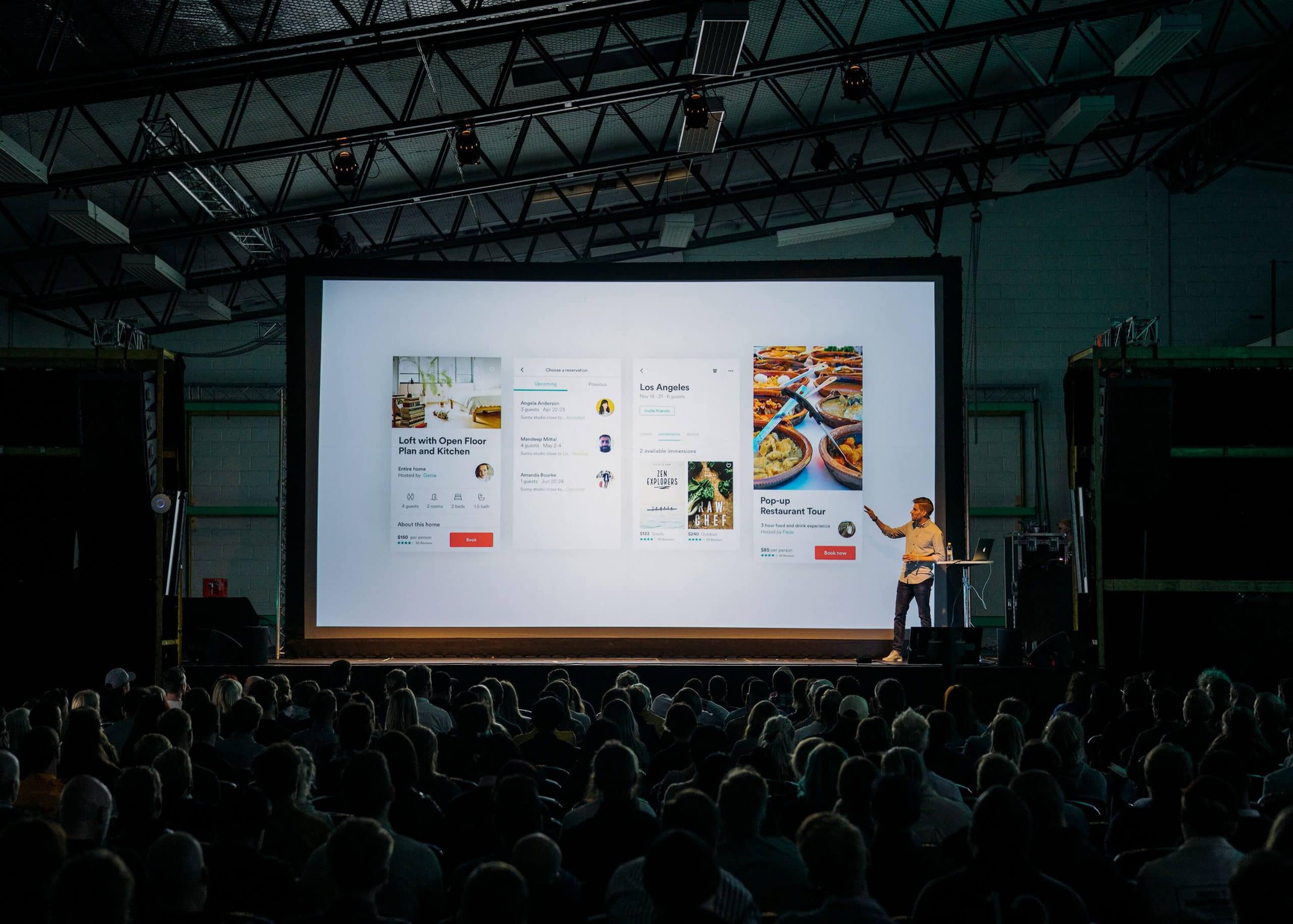Have you ever caught yourself marveling at the AI art that pops up all over social media? Those stunning images look like they come straight out of a fantasy or futuristic world. Have you wondered how people make them with AI tools while your own tries don’t quite hit the mark?
Well, the secret to creating jaw-dropping AI art isn’t as hidden or exclusive as it might seem. It all boils down to knowing how to ask for what you want— writing detailed AI Art Prompts. With just a little know-how and some creative thinking, using these AI tools to create amazing pieces can become as easy as sending a text.
We’re here to walk you through how to craft the perfect AI art prompts, from crafting on your own or with an AI tool. We’ll share tips, examples, and even templates to help turn your vision into digital art, whether you’re an experienced artist looking for new inspiration or someone just starting to explore what’s possible.
What Are AI Art Prompts & How Do AI Art Generators Work?
AI art prompts are instructions or phrases you feed to an AI art generator to create visual art. Think of it like giving directions to an artist, but in this case, the artist is a computer program. These prompts can range from simple descriptions like “sunset over the mountains” to more complex and detailed ones, specifying elements like mood, colors, style, and even specific artists to emulate.
How AI Art Generators Work
AI art generators are fairly simple to use. They follow a simple step-by-process, stated below:
- Input and Interpretation: The process begins when you input your prompt into the AI prompt ideas generator. The AI then interprets the text, breaking it down to understand the elements you want included in the artwork.
- Reference and Learning: Most AI prompt idea generators have been trained on vast datasets of images and their descriptions. They use this training to reference how certain objects, styles, or settings should look based on the prompt provided.
- Image Generation: Using what it knows from its training and the specifics of your prompt, the AI then starts generating the image. This involves complex algorithms that draw on elements of machine learning and neural networks, specifically Generative Adversarial Networks (GANs), in many cases.
- Iteration: Some AI programs create an image through several iterations, each time refining and adjusting it based on internal criteria set by its programming to ensure it aligns as closely as possible with the prompt.
- Output: The final step is the output, where the AI presents the generated image. Depending on the complexity of the prompt and the AI’s capabilities, this can range from abstract interpretations to highly detailed and realistic images.
Get Creative With Social Champ’s AI Imaginator!
Creating visuals for your social media has never been easier. See your vision come to life with Social Champ!
Importance of Using AI Art Prompts
Using AI art prompts is catching on fast for creating digital art for a bunch of really good reasons, such as the following:
- Boosting Creativity: AI art prompts help people think big and bring their wildest ideas to life, even if they’re not great at drawing or painting by hand. You just need to describe what you’re imagining, and the AI does the heavy lifting, helping push your creativity to new heights.
- Making Art for Everyone: This tech opens up art-making to more people. Even if you’ve never had an art class or you don’t have paints and canvases lying around, you can still create complex and stunning art.
- Finding New Ideas: AI art generators can be a goldmine for fresh inspiration. Sometimes, how the AI understands your prompts can surprise you and spark new ideas. Plus, messing around with different prompts lets you play with new styles or themes you might not have tried before.
- Working Together with AI: When you use AI art prompts, it’s like teaming up with a machine. You provide the vision, and the AI brings it to life using its tech smarts and experience. This teamwork can lead to new kinds of art that neither humans nor machines could make on their own.
- Learning Tool: For teachers and students, prompts for AI art are a great way to get hands-on with both art and tech. They show off how AI works in a way that’s easy to see and understand. Plus, they can help teach art basics, showing how changing up your prompts changes your art results.
- Saving Time: For people working in creative fields, AI can speed up the early stages of creating something new. You can quickly prepare visuals for presentations and early product designs or explore different concepts, saving a ton of time and effort.
All in all, the big deal about using AI art prompts is how they open up new ways to be creative, make art more reachable, spark new ideas, and save time. It’s a cool mix of art and tech that’s opening doors for all sorts of creators, no matter their backgrounds or skills.
Related Article: Artificial Intelligence in Social Media – A Deep Insight!
How to Write Winning AI Art Prompts
Writing winning AI art prompts involves a blend of clarity, creativity, and strategic thinking. To craft prompts that lead to captivating and relevant artwork, consider the following tips:
Be Specific
The more detailed your prompt, the better the AI can understand and visualize what you’re aiming for. Include specifics about the subject, setting, style, and mood you envision. For instance, instead of saying “a landscape,” describe “a sunlit forest landscape in autumn, with vivid orange and red leaves.”
Incorporate Artistic Styles or Movements
Mentioning specific artistic styles or movements can drastically influence the outcome. If you have a particular aesthetic in mind, include it in your prompt, like “in the style of Impressionism” or “reminiscent of Van Gogh’s Starry Night.”
Use Vivid Descriptions
Colorful and imaginative descriptions can help guide the AI toward your desired outcome. Words that evoke emotions, textures, and atmospheres add depth to your prompts. For example, you can write something like, “a serene beach at sunset, with soft pink skies reflecting on calm waters.”
Balance Detail and Flexibility
While specifics are important, leaving some elements open-ended can lead to pleasantly surprising interpretations. Find a balance between guiding the AI and allowing it room for creative freedom.
Experiment With Different Prompt Structures
AI art generators might respond differently to various prompt structures. Experiment with listing elements separately, using full sentences, or even framing your prompt as a story. Each approach can yield unique results.
Incorporate Emotional or Conceptual Themes
Adding an emotional layer or a conceptual theme can enrich the artwork. Consider prompts like “the feeling of loneliness in a bustling city” or “the concept of time as represented by changing seasons.”
Reference Known Works or Elements
If you want your artwork to have similarities to known works or contain specific elements (like characters or objects), directly reference these in your prompt. However, be mindful of copyright issues when doing so.
Iterate and Refine
Creating the perfect art piece often requires several attempts. Use the results of each prompt as learning opportunities to refine and adjust your descriptions for future prompts.
Keep up With Platform Updates
Different AI art generators may have unique capabilities or respond differently to prompts. Stay updated on any new features or tips shared by the platform you’re using, as these can offer new strategies for crafting effective prompts.
By following these guidelines, you can create the best prompts for AI art that are not only clear and detailed but also open enough to inspire unique and beautiful artworks that resonate with viewers.
Featured Article: AI-Powered Content – What Does the Community Think?
40+ AI Art Prompts Examples
Here are 40+ examples across various themes and styles to inspire your next AI-generated masterpiece:
Fantasy and Sci-Fi
- “A cyberpunk cityscape at night, illuminated by neon lights and digital billboards.”
- “An enchanted forest with glowing trees and mystical creatures hidden in the shadows.”
- “A space opera scene featuring a dramatic starship battle above an alien planet.”
- “A steampunk inventor’s workshop, filled with intricate gadgets and machinery.”
- “A futuristic utopia where nature and technology harmoniously coexist.”
- “A sorcerer casting spells in an ancient library filled with magical books.”
- “An underwater civilization with mermaids and bioluminescent sea life.”
- “A post-apocalyptic wasteland with survivors roaming in makeshift vehicles.”
Nature and Landscapes
- “A majestic mountain range at sunrise, with the first light casting golden hues.”
- “A serene Japanese garden in spring, cherry blossoms gently falling into a koi pond.”
- “The Northern Lights dancing over a snowy Icelandic landscape.”
- “A vibrant coral reef teeming with colorful fish and aquatic life.”
- “A thunderous waterfall is hidden deep within an Amazonian rainforest.”
- “A peaceful meadow at golden hour, wildflowers swaying in the breeze.”
Historical and Cultural
- “A bustling medieval marketplace, with vendors selling goods and townsfolk mingling.”
- “An ancient Egyptian procession honoring Pharaoh set against the backdrop of the pyramids.”
- “A traditional Native American ceremony taking place under the stars.”
- “Renaissance fair in full swing, complete with jesters, knights, and artisans.”
- “A Victorian ballroom with elegantly dressed guests waltzing.”
- “Samurai warriors facing off in a tranquil Japanese bamboo forest.”
Artistic Styles
- “A portrait in the style of Picasso’s Cubism, featuring abstract shapes and vibrant colors.”
- “A landscape painted in the Impressionist style, capturing the essence of light and movement.”
- “A Surrealist scene blending dreamlike imagery with bizarre, fantastical elements.”
- “An Art Deco poster advertising a luxurious 1920s Gatsby-style party.”
- “A piece of Pop Art inspired by Andy Warhol, featuring a modern celebrity.”
- “A Gothic cathedral interior, detailed in the hyper-realistic style.”
Emotional and Abstract
- “The embodiment of joy as a bright, expansive landscape basking in sunlight.”
- “Loneliness is visualized as a single tree standing in the midst of a vast desert.”
- “Chaos represented by a tumultuous storm at sea, waves crashing violently.”
- “A surreal representation of love as intertwining galaxies in outer space.”
- “Peace depicted as a tranquil Zen garden, perfect for meditation.”
Miscellaneous
- “An AI imagining itself in a mirror, a blend of digital and human-like features.”
- “A vintage 1950s diner on Route 66, with classic cars parked outside.”
- “A whimsical candy land filled with sweet treats and pastel rivers.”
- “A scene from a noir detective story, complete with a shadowy figure in a trench coat.”
- “A fusion of classical architecture with futuristic elements, creating a time paradox.”
- “A high fashion photoshoot in an unexpected location, like a deserted factory.”
- “A kaleidoscopic pattern created from tropical birds and foliage.”
- “A detailed map of a fictional world, complete with kingdoms, mountains, and oceans.”
- “The interior of a cozy cottage library, with a fireplace and shelves of old books.”
- “A superhero showdown in the heart of a bustling metropolis at night.”
These prompts serve as a starting point for your creative explorations with AI art generators. Feel free to modify, combine, or expand upon them to suit your vision and inspire unique creations.
Tips to Generate Creative AI Art Prompts (Using AI)
Did you know that you can also use AI to write AI art prompts? Here are detailed tips on how to write AI art prompts that can help you achieve mesmerizing results.
Before putting your fingers on the keyboard, take a moment to close your eyes and visualize the scene you want to create. Imagine the colors, the lighting, the mood, and the composition. What’s happening in the scene? Who or what is in it? How do you feel when you look at it? This mental imagery will serve as your prompt’s foundation, helping you convey a clear and vivid picture to the AI.
For example, instead of “a forest,” envision “a dense forest at dawn, sunlight piercing through the mist, casting long shadows on the dew-covered undergrowth.” You can then provide this detailed vision to an AI content generator, such as Chat GPT, Gemini, or AI Content Wizard, and ask it to create a prompt for you!
Top AI Art Generators to Use in 2025
Whether you’re a pro artist, just playing around for fun, or interested in what happens when technology meets creativity, these tools are perfect. Here’s a look at some of the best ones out there and what they do best:
Artbreeder

Artbreeder Artbreeder is great for those who love to play around with AI image prompt ideas and see where their creativity takes them. It uses something called genetic algorithms to blend images. This means you can adjust settings to mix different pictures and create something new and unique. Artbreeder is really good for making detailed landscapes, faces, or characters, giving you lots of control over how the final picture looks.
Deep Art Effects

Deep Art Effects Ever wanted to see what your photos would look like as paintings by famous artists? Deep Art Effects is your go-to. It uses smart technology to turn your pictures into art that looks like it was made by legendary painters. Whether you love Impressionism or Picasso’s bold styles, Deep Art Effects can make your photos fit right in with those classic looks.
DALL·E 2

DALL·E 2 DALL·E 2, from OpenAI, is all about turning words into pictures. You give it a description, no matter how detailed or wild, and it brings your words to life with images that are spot-on and sometimes even a bit quirky. Want a picture of a cat in space eating pizza? DALL·E 2 can probably make that happen with an amazing level of detail.
Midjourney

Midjourney This one’s like a creative buddy that takes your descriptions and turns them into art. It’s really flexible, working across lots of different styles, so whether you want something that looks modern or more traditional, Midjourney can help make that art dream a reality.
Stable Diffusion

Stable Diffusion What’s cool about Stable Diffusion is that it’s something you can use right on your own computer. It’s open for anyone to try, and it’s super capable. Based on your text instructions, it can make everything from super-realistic images to more artistic ones. Plus, being part of a community means you always have new ideas and support as you create your art.
Nightcafe Creator

Nightcafe Creator If you’re after something easy to use with lots of style options, check out NightCafe Creator. It supports making art from text or even changing existing pictures to look like they’re done in different styles. It’s a great choice for anyone wanting to explore various creative paths.
These AI art generators offer something for everyone, from those just dipping their toes into digital art to seasoned creators looking for new inspiration.
Related Article: What Is a Vlog: Everything You Need to Know in 2025
Social Champ’s AI Imaginator

Social Champ’s AI Imaginator Social Champ’s AI Imaginator is not just another image generator. It harnesses the power of artificial intelligence to transform your creative ideas into stunning visuals with minimal effort. Whether you’re looking to create eye-catching graphics for your social media posts, blog articles, or digital marketing campaigns, the AI Imaginator offers a seamless and intuitive process to bring your vision to life.
The beauty of Social Champ’s AI Imaginator lies in its simplicity. Users can input a brief description of the image they have in mind, and within moments, the AI works its magic, generating a selection of images tailored to those specifications.
The technology behind the AI Imaginator is designed to understand and interpret your requirements, ensuring that the final visuals are not only relevant but also resonate with your intended message and aesthetic.
Conclusion
Getting good at creating AI art prompts is a mix of skill and intuition. It’s about being clear yet imaginative and knowing just what to tell the AI so it gets your idea right. Think in pictures, mix up different styles, and learn a few art terms to make your prompts even better. The secret to getting great results? Try out new things and keep tweaking your prompts. Whether you’re brand new to this or you’ve been at it for a while, getting better at writing these prompts is a surefire way to open up new creative doors and make art that really stands out.





















